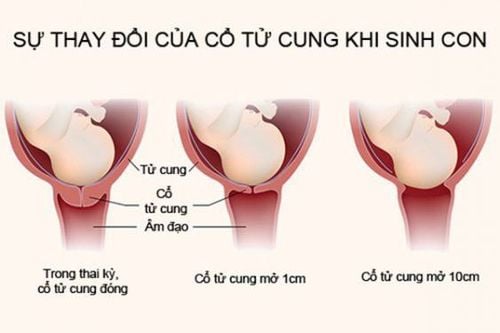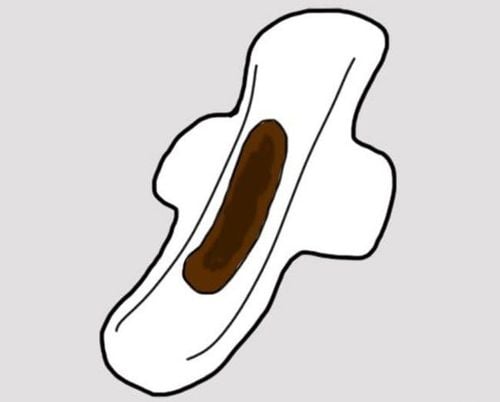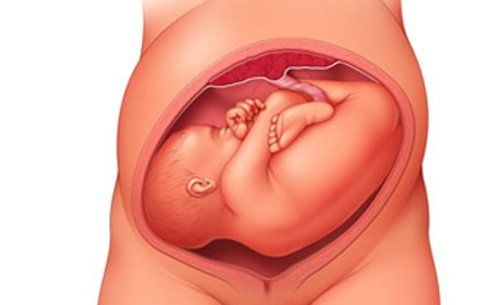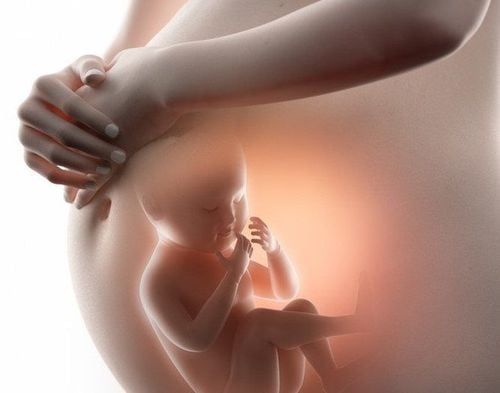This is an automatically translated article.
The article was professionally consulted by Specialist Doctor I Pham Thi Yen - Obstetrics & Gynecology - Department of Obstetrics and Gynecology - Vinmec Hai Phong International General HospitalInternal fetal rotation is a procedure that directly adjusts the position of the fetus in the uterine cavity to a favorable position to facilitate vaginal delivery. For an abnormal fetal position, mastering the principles and performing the correct intrauterine rotation will make natural labor easy, while avoiding the mother an unnecessary surgery.
1. What is internal rotation?
Pregnancy rotation is an obstetric term. In which, an experienced doctor, midwife or midwife will perform a procedure with the aim of changing the position of the fetus in the uterus from an abnormal position that is difficult or impossible to give birth normally to a position that can. Birth is usually vaginally.
In fact, fetal rotation is divided into two types, based on how it is performed: external fetal rotation (also called external fetal rotation) and internal fetal rotation (also known as internal fetal rotation). The biggest difference between these two types of rotation is that if external rotation is usually done when the pregnancy is near full term, internal rotation is in the uterus, right during labor.
Circumstances often apply intrauterine pregnancy, especially for the second fetus in a vaginal delivery of twins. At this time, the purpose of internal rotation is to convert the remaining fetus from the shoulder to the breech or cephalic position to facilitate vaginal delivery, with the advantage that the mother's cervix and appendages have dilated after the first birth.

2. Indications for internal rotation of pregnancy
Because endotracheal rotation is a technique performed within the uterus, this technique is often indicated for the last fetus to have a horizontal shoulder position when delivering multiple pregnancies. In routine clinical practice, it is the second pregnancy in a twin delivery.
In addition, internal fetal rotation can also be considered to help women give birth normally in the case of a single pregnancy, low birth weight, breech delivery but stillbirth, severe fetal malformations with poor prognosis. is intended to prevent the mother from having an unnecessary cesarean section.
To perform the intrauterine pregnancy technique, besides having an indication for vaginal delivery, the pregnant woman also needs to have all the following conditions: the cervix is fully dilated, and amniotic fluid remains, absolutely excluding any head - pelvis and fetus must be healthy, without fetal distress.
Contraindications when performing intrauterine rotation are in women who have given birth to a premature baby, have an old cesarean section's scar, and have run out of amniotic fluid in the uterus. At the same time, it is not advisable to carry out intrauterine pregnancy in places where there is no operating room, lack of means of monitoring and resuscitation for pregnant women, and neonatal emergency in general.
3. How to perform intrauterine fetal rotation technique?
Performing internal rotation should be a doctor specialized in obstetrics. In the case of an emergency, evaluation of a pregnant woman with all the basic favorable factors, an experienced midwife or midwife is still acceptable to practice this technique. However, no matter who it is performed by, the principle of sterility should always be strictly adhered to. Operators need to fully prepare hand washing steps according to the sequence of surgical hand washing steps, wear specialized sterile clothes and wear gloves, masks, and hats throughout the process.
After clearly explaining to the mother and family about internal rotation including the purpose, method and possible risks, the doctor needs to inject muscle relaxant, pain reliever and sedation for the mother. Usually between labors during twins, the uterus tends to lose muscle before the start of the next labor. However, if uterine contractions occur continuously, the doctor will have to intervene to reduce the intensity and frequency with continuous infusion of tocolytic drugs, in order to create favorable conditions for internal rotation of the fetus; After successful intrauterine pregnancy, she switched to tocolytic drugs.
In addition, emergency and resuscitation facilities for mother and child need to be prepared right next to them, including sources of oxygen, intravenous fluids, and vasopressors.
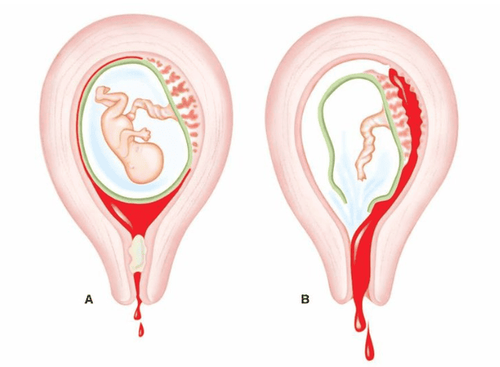
Before officially performing internal rotation, the doctor needs to do a final check to ensure that all conditions are met before rotation. Uterine contractions must be controlled gradually in frequency, gradually decreasing in intensity, still amniotic fluid and still in the high position, loose. In addition, when examining the vagina, the cervix is fully open, the pelvis is wide...
At the time of the first pregnancy, the doctor will carefully examine the second pregnancy to determine the status of the fetus, the position of the fetus, and the position of the fetus. of the fetal head and rump. Sometimes it is not obvious that ultrasound means is needed. Next, the doctor will put his dominant hand into the uterus, actively press the amniotic fluid, move his hand towards the fetal bottom to find the fetal leg and pull down to pull the fetus. Before pulling, it is necessary to distinguish the legs or arms of the fetus to avoid pulling by mistake. It is best to pull both legs of the fetus at the same time, if it is too difficult to pull one leg, pull the front leg. If you pull the right back leg, turn the back leg into the front leg and then pull it down.
Thanks to that, the procedure will be considered successful when converting the shoulder to the butt position to be able to give birth naturally. However, in some cases, the doctor will take the initiative to slowly pull the fetus out (great traction).
Finally, peel the vegetables and check the safety of the uterus and vagina to see if the uterus and vagina are damaged, torn, broken, or have prolonged bleeding... or not. If there is, it is necessary to continue to handle it, to avoid the mother falling into urgent blood loss, general collapse.
4. Risks when performing intrauterine pregnancy technique
Compared with ectopic pregnancy, internal rotator cuff pregnancy will have more possible risks. The most important are the mechanical complications such as uterine rupture and bleeding lesions, blood loss shock...
Accordingly, after performing a vaginal birth, pregnant women are still monitored at the department for the purpose of due to pulse, blood pressure, uterine contractions, vaginal bleeding, or internal bleeding.
In addition, if the intrauterine pregnancy is not according to the indications and techniques, it is easy to cause complications such as uterine rupture, trauma, placental abruption, fetal failure ...
In addition, the uterus is inherently an environment. sterility. Therefore, all cases after intervention in the uterine cavity must use systemic antibiotics to prevent subsequent postpartum infections.
In summary, the intrauterine rotation that helps to correct the fetal position during labor always brings benefits and comes with certain risks. A thorough examination, proper assessment of the indications for vaginal delivery and adherence to the correct principles will help the technique be highly effective, ensuring a safe birth for both mother and child.
Please dial HOTLINE for more information or register for an appointment HERE. Download MyVinmec app to make appointments faster and to manage your bookings easily.






